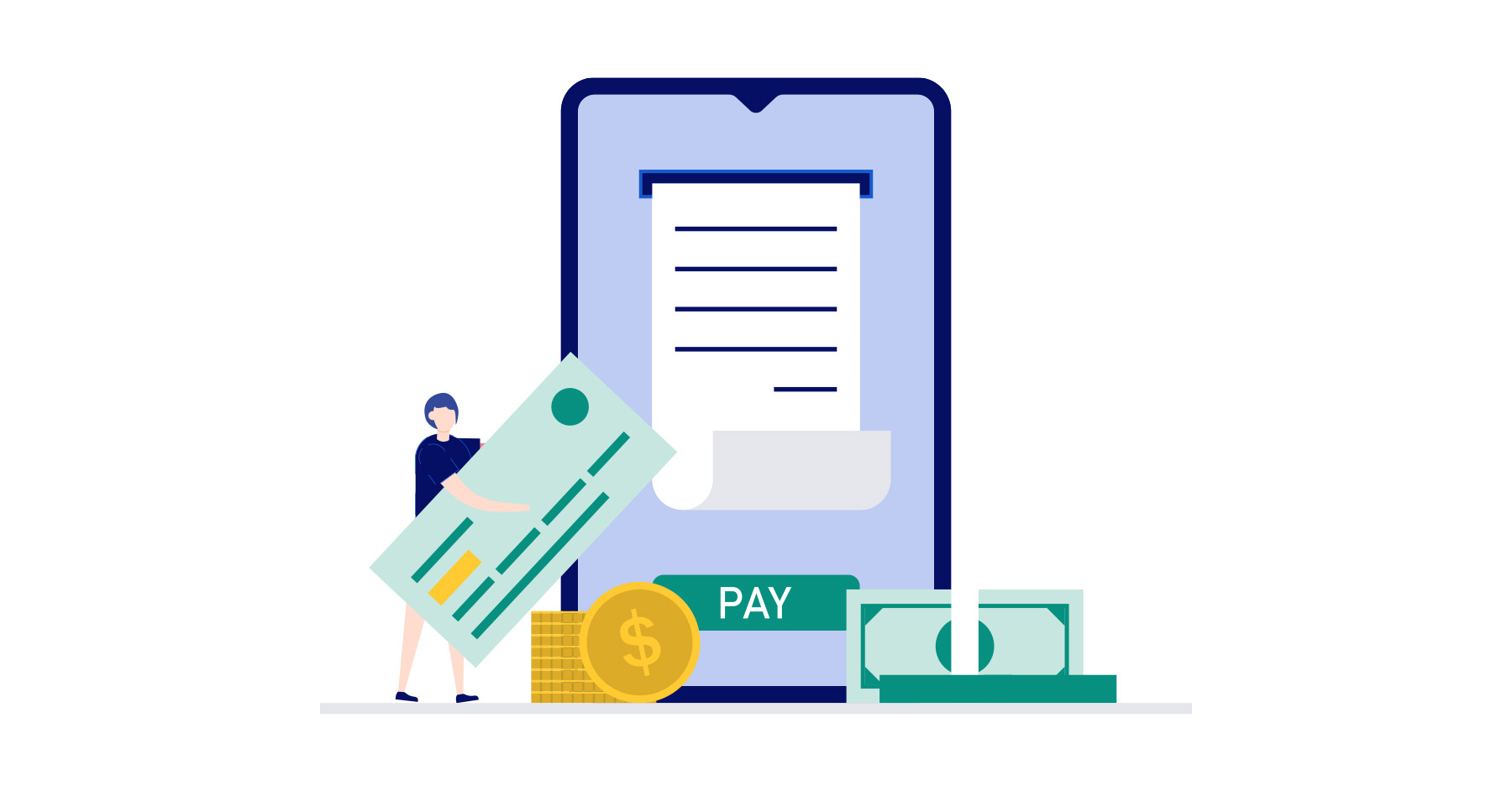You aren’t a debt collector. But when your client doesn’t pay their invoice, it starts to feel like they’re trying to avoid paying you.
And it always gets a little awkward asking for payment, especially when you’re a small business and they’re a bigger player.
It’s natural for most of your clients to try to hold off payment for as long as possible. To protect yourself and ease the problem on your end, there are several options you can take.
Here are 8 ways to recover your receivables when you’re stuck in a situation where your client doesn’t pay their invoice.
Preventing Non-Payments
1. Follow-Up on the Invoice
Anyone who’s done sales knows that the follow-up is an integral step in closing any business deal. Very rarely do deals get closed on the first meeting.
In this case, if your invoice has gone unpaid for several days and you’ve already handed over the product or done the service, it’s a great time to follow up.
Automated reminder using an automated invoice processing software
Automated invoice processing software can make following up on late payments easier because you can sort invoices by client name or due date, and set up reminders for overdue payments.
For example, 1 week before the invoice is due, you can set a rule to send an automated reminder that payment is coming up.
1 day before, another one can be sent.
If your accounting software still doesn’t recognise the payment being made, another reminder can be sent on the day itself to pay their invoice.
Having a rule like this ensures that your client doesn’t forget. And you won’t have to feel bad for sending multiple emails because your system is doing it.
Personally resend the invoice
This is the second reminder to pay the invoice. Make sure you aren’t sending them an automated reminder, as that is much less personal.
Resending the invoice is a friendly reminder to “put your money where your mouth is”.
At this point, there’s still no need to get aggressive. It might be frustrating, but ultimately, you want to ensure their satisfaction, in hopes that they become a repeat customer.
Best practice: Resend the invoice and follow-up over the phone or send a follow-up message to let them know the invoice has been resent. This puts a little more pressure to get it paid.
Find a different point of contact
So, your contact person isn’t responding to your messages.
Try reaching out to someone else at the company.
Get an email address or a phone number from the company’s website.
Look up other employees on LinkedIn, send a message to their social media profile. If sending messages doesn’t work, call.
If your client company still isn’t responding, stop by their office if possible.
It might not be worthwhile if the invoice you’re chasing your customer for is just $100. But if your client owes you thousands and is months late, an in-person visit could do the trick.
For more information about automated invoice processing software, see our features here.
2. Go for Factoring
Why would a company use factoring?
The simple answer to this is to speed up access to funds and incoming cash flow since receiving invoice payment can sometimes be a lengthy process.
One of the biggest problems for small and medium businesses is that payment terms for invoices can range from 30 to more than 120 days, and this can lead to cash flow issues.
So much so that it could potentially make it difficult to carry out daily operations.
The gap in cash flow during this period often has to be filled either by bank overdrafts, bank loans or other financing options such as factoring.
What is invoice factoring?
Invoice factoring is a way for businesses to fund cash flow by selling their invoices to a third party (a factoring company) at a discount.
By having the invoices advanced, you can offload the collection responsibility and increase your cash flow.
How does invoice factoring work
The factoring company purchases the unpaid invoices and takes over collections.
Once the full amount is collected from the client, they’ll deduct the commission and interest charges and return you the difference.
Since they are taking on the risk that your customer might not pay the invoice, it’s normal that they charge a little more.
This form of factoring might be suitable for businesses with outstanding accounts receivables in the 60 to 90 days or longer time frames.
Typical Initial Advance: 80% to 95% of the invoice value
Typical Fee: Varies based on invoice amount and creditworthiness of both client and debtor
Who Owns the Invoice: The factoring company
Who Collects the Invoice: The factoring company
You might be interested in: Accounting Hacks with an Accounts Receivable and Payable Software
3. Ask for a Deposit
By firmly and confidently asking for an upfront deposit, you can show all of your clients that you quite literally mean business. Plus, it also helps reduce default risk.
If you think about it, most activities we partake in require us to pay upfront in full before enjoying their products or service.
At the movie theatre, you buy your ticket then take your seat. When you’re at a fast-food chain, you buy your meal then wait for it to be prepared. Or at the supermarket, you can’t go home to cook before paying at the cashier.
Partial payment upon delivery
When you think of all the businesses that don’t require upfront payment, you’ll realise they have a certain advantage – physical presence.
Take a landscaper for example. They’re physically there on your property and won’t leave until they’re paid. The mechanic won’t give you back your car until you pay them.
But if we’re talking much larger fulfilment like supplying goods to a restaurant or distributing parts to a factory, then you could do this:
- Send the invoice when the order is confirmed
- Request partial payment in cash/ cheque/ via bank transfer upon fulfilment. Ensure you or a member of your staff carries the relevant paperwork down too.
- Remaining payment to be made by a certain date
Partial payment before delivery
That said, it might still not be feasible for some businesses.
If you have international trade and couriers aren’t part of your company. Or you’re an interior designer and you’ve already spent days planning and doing the work.
Partial upfront payment would be an alternative.
Collect a percentage of the total fees before beginning work and have the remaining paid up when the goods are handed over/ services are completed.
You might be interested in: Improve Cash Flow Management through Progressive and Recurring Invoicing
4. Ensure Accurate Invoices Are Sent
Sometimes, it’s not that your client doesn’t want to pay the invoice. Maybe you’re just not providing your client with accurate information. All too often, the fault lies at the door of manual processing.
In fact, 61% of late payments are due to incorrect invoices. To avoid unnecessary delays, ensure that you have the necessary details on your invoice:
- Your business details
- Your client’s details
- Invoice number and date
- Itemised descriptions of the goods or services provided
- The total amount due, including taxes if applicable
- PO number or reference number
- Payment terms, including how the customer can pay you and any penalties for late payments
5. Charge Late Fees
If the idea of charging a late fee when your clients are not paying on time makes you feel uncomfortable, don’t. Late fees are a common practice.
Banks, cable companies, phone companies, they all do too.
But it’s not the fee that’s important and it definitely isn’t you taking advantage of them. It’s the urgency it creates.
No one likes paying more than they have to. So late fees are a deterrent.
And it’s exactly what you want.
The key to charging interest is to do it legally, without straining business relations and without compromising your bottom line.
Two things to take note:
- Make sure the original contract the client signed clearly states any fees or charges that will be assessed. Eg. “Accounts not paid within terms are subject to a ___% monthly finance charge”.
- Try waving a carrot instead of chasing them with a stick by offering a discount for either full payment upfront or for early payment. Sometimes, incentives can be more enticing than penalties.
Approaching Non-Paying Clients
6. Offer Financing Options
Angry that your customers is not paying their invoice? Well, oftentimes the delinquent client who doesn’t pay your invoice not might be avoiding payments simply to be nasty.
More likely, they’re facing financial issues. Reach out to them and see if you can work something out such as a payment plan.
Instalments
Instalments usually come with interest charges. It’s only fair that they are penalised for not paying on time.
Collect X dollars over the next Y months might not be the most ideal situation for your own bank account, but at least you still receive the full payment. To avoid being in a cash strapped situation yourself, consider forecasting your cash flow.
Good faith payment
This works only if you’re on good terms with a client and you trust that they will pay you.
You could negotiate a good faith payment now and the rest in a while when they have more float in their bank.
Alternatively, charge them instalments with interest later on or inform them that they’ll have to pay late fees.
If this client has a recurring trend of late payments, you might want to consider stepping up your non-payment prevention tactics discussed in options 1-4.
7. Know When to Cut Losses
Take every necessary effort to collect your payment from the client yourself.
But even after stopping work and giving your client options, they still don’t pay the invoice, you might have to find an alternative or just drop it altogether.
When debt cannot be recovered or collected from your debtor, you may decide it’s time to write it off as bad debt.
This goes under the Provision or Allowance for Accounts Receivable category on the balance sheet.
A debit entry for that amount is entered into the “Allowance for Doubtful Accounts” column to balance the balance sheet. Essentially, you are considering it as an expense.
8. Get Professional Help with Debt Recovery
One bad relationship can sour many others based on what they say about you, so you have to be careful (especially as a small business) to not create enemies even if you’re in the right.
That said, you’re still a business entity and you’ve got to do what it takes to survive.
In Singapore, there are a few avenues to solve the issue. This includes:
- Talking to the Singapore Mediation Centre (SMC)
- Filing a claim with the Small Claims Tribunals
- Take legal action by drafting a letter from a debt recovery lawyer (do keep in mind that legal fees may be high, so the invoice amount has to be worth the money owed to you)
If you choose this legal route, collate as much information and evidence as possible pertaining to the work done, as well as all records of communication with your non-paying client.
Starting Steps To Get Paid On Time
Accounting software like DashBod, have automated invoice processing software with Accounts Receivables tracking.
They allow you to create invoices immediately, send invoices from anywhere, from any device, in any location. You can also track payment and send out automatic reminders for payment.
With the function to store client information within your database for future invoices and set up recurring invoices/billing, you can improve your Accounts Receivables and cash flow.
With an automated invoice processing software, you’ll never run into the problem where your client doesn’t pay your invoice again. Try DashBod’s free trial today. 


